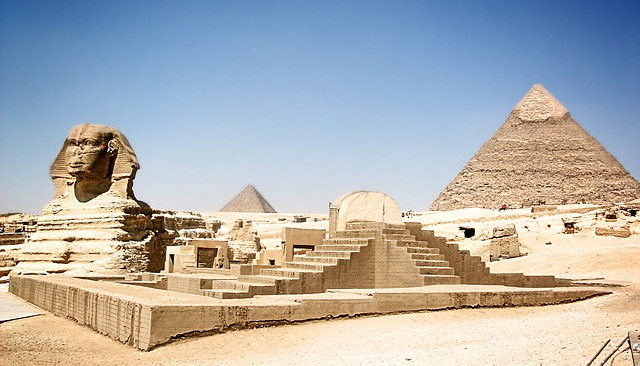The land of the pharaoh has always excited archaeologists and attract tourists from all around the world. This year alone there were several discoveries which stunned the archaeologists.
Whether it was the finding of the cone-shaped headgear at the ancient Egyptian city of Amarna, ancient pharaoh Ptolemy IV's temple or the finding of the industrial area in Valley of the Monkeys or the discovery of 20 ancient coffins in the southern city of Luxor, 2019 was a fantastic year for archaeological discoveries in Egypt.
Ramses II statue in Giza
A group of archaeologists found an ancient statue, which has been described as one of the "rarest archaeological discoveries" of Egypt. This finding was unique as it was a pink ancient statue with the Ka symbol, which is an important sign of ancient Egyptian cosmology.
Egyptian head cones
The researchers in Egypt unearthed two ancient headgears at the historic Egyptian city of Amarna which was built by pharaoh Akhenaten and was occupied from 1347 BC to 1332 BC. It should be mentioned that ancient Egyptians also used to wear different kinds of headgears, especially pharaoh, while some wore the distinctive double crown known as a Pschent.
Limestone coffin

During an excavation mission conducted by the Ministry of Antiquities, archaeologists found a well-preserved ancient coffin. Researchers found that the coffin was made out of limestone. Inside of the coffin archaeologists found poorly preserved mummies in the Qesna quarry excavation site in Monufia back in April.
Ancient Roman establishments in Alexandria
An archaeology team, which included Egyptian and Polish researchers, found the remains of an Ancient Roman town in Alexandria's Kom El-Dekka in July. The team also discovered a collection of mosaics covering the floor of a townhouse, a massive imperial bathroom, a small theatre and a unique collection of 22 lecture halls. After this finding archaeologists claimed that these are the remains of an old university.
Ancient Egyptian priest mummies
30 sealed wooden coffins along with the priest mummies within at El-Assasifan ancient necropolis nearby Luxor. In October, after the finding, archaeologists came to know that the well-preserved coffins date back to almost 3,000 years. It should be noted that these coffins included 23 adult males, 5 adult females and 2 children.
Sohag tomb and Tutu's mummy
Archaeologists found a tomb containing tens of mummified animals and one human mummy, which is believed to have once been the owner of the tomb. The inscription found from the tomb is considered as unique as they still have their original colour.
4000-year-old tomb of Saqqara
During excavation, the archaeologist has found that well-preserved tomb contains vibrant wall paintings which look like they were painted just a few days ago. But in reality, the tomb is 4000-year-old. Later it was revealed that it was the tomb of a Fifth Dynasty officially named Khuwy in Saqqara. The sarcophagus and Khuwy's mummy were found in ruins as a result of an attempted robbery, but the remains clearly showed the signs of mummification.
Underwater Cities of Heracleion and Canopus
Jewellery, new ports, pottery and temple ruins from ancient Egypt were found in July about 32 kilometres northeast of Alexandria in the ancient underwater cities of Heracleion and Canopus. After this discovery, archaeologists understood that the city was much bigger than previously thought.
Greco-Roman and Ptolemaic Sites
Around 20 archaeological sites from the Ptolemaic, founded in 305 BC and Greco-Roman eras were discovered in central and east Alexandria by coincidence after the land was identified for construction suitability.
Lion mummies
Several animal mummies were discovered at the Bubastian necropolis in Saqqara in November. Two of those mummies were lion cubs, which was not very common in ancient Egypt.









